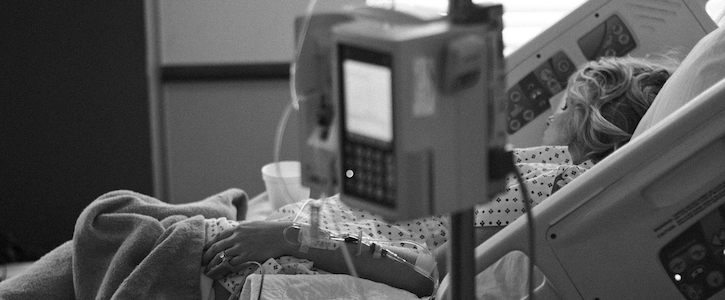EHRs Cut Costs, Hospitalization Time
But health systems reap these benefits only when they meet meaningful use standards.

EHRs can help health systems cut costs and length of patient stays — if they satisfy meaningful use criteria.
When electronic health record (EHR) systems meet the government’s meaningful use standards, the technology can help health systems decrease the time patients spend in the hospital, saving costs, a new study finds.
>> LISTEN: The Slow, Frustrating Rise of the Electronic Health Record
Researchers from Case Western Reserve University found that the average patient was discharged roughly four hours earlier in hospitals whose EHRs met meaningful use criteria, representing a 3 percent decrease from the typical five-day hospital stay. Patients with complex or multiple chronic conditions, meanwhile, saw a 3.5 percent drop in average length of stay.
“Electronic health records, when meaningfully implemented, help patients go home sooner, reducing their exposure to germs in the hospital and likelihood of having to come back,” Manoj Malhotra, Ph.D., study co-author and dean of Case Western’s Weatherhead School of Management, said. “Longer hospital stays cost more money for all involved.”
After scrutinizing four years of data, researchers found that meaningful use hospitals did not see rising readmission rates after these abbreviated patient visits.
While the findings may excite some in health IT, healthcare leaders must meet a high bar to reap the benefits of their EHRs. Hospitals that didn’t meet meaningful use standards saw no significant decreases in length of stay, according to the study.
“Results from this study indicate that meaningful assimilation of technology is likely to help free up clinicians and other valuable resources,” Malhotra noted. “This approach is preferable to making additional investments in facilities or hiring additional employees as more people seek hospital services.”
Nearly a decade ago, the passage of the HITECH Act kicked off rapid-fire adoption of EHR systems in health systems and providers’ offices across the country. With tens of billions of dollars in government incentives, healthcare organizations adopted the technology to the point where EHRs are now nearly ubiquitous.
But adoption was just one step in the larger campaign to leverage EHRs. Meaningful use standards came about to help providers improve healthcare and patient safety, engage patients and boost population health, among other things.
Government health IT data suggest that most hospitals have achieved some form of meaningful use, but office-based physicians lag.
In the recent study, researchers found that partial or full adoption of EHRs yielded no benefits, while meaningful assimilation made all the difference.
“Any efficiencies, even small improvements, can produce significant savings when adopted in a large healthcare system — and are certainly preferable to the alternative,” Malhotra added.
The bottom line: Hospitals that make proper use of their EHRs can better help patients and everyone’s wallet, especially considering that prolonged patient stays cost hospitals roughly $600 per day.
Get the best insights in healthcare analytics directly to your inbox.
Related
Medical Scribes Can Cut Physician EHR Time and Boost Productivity, Satisfaction
EHRs Can Be Dangerous. Are New Guidelines Necessary?
How Apple Brings Health Records to the Smartphone